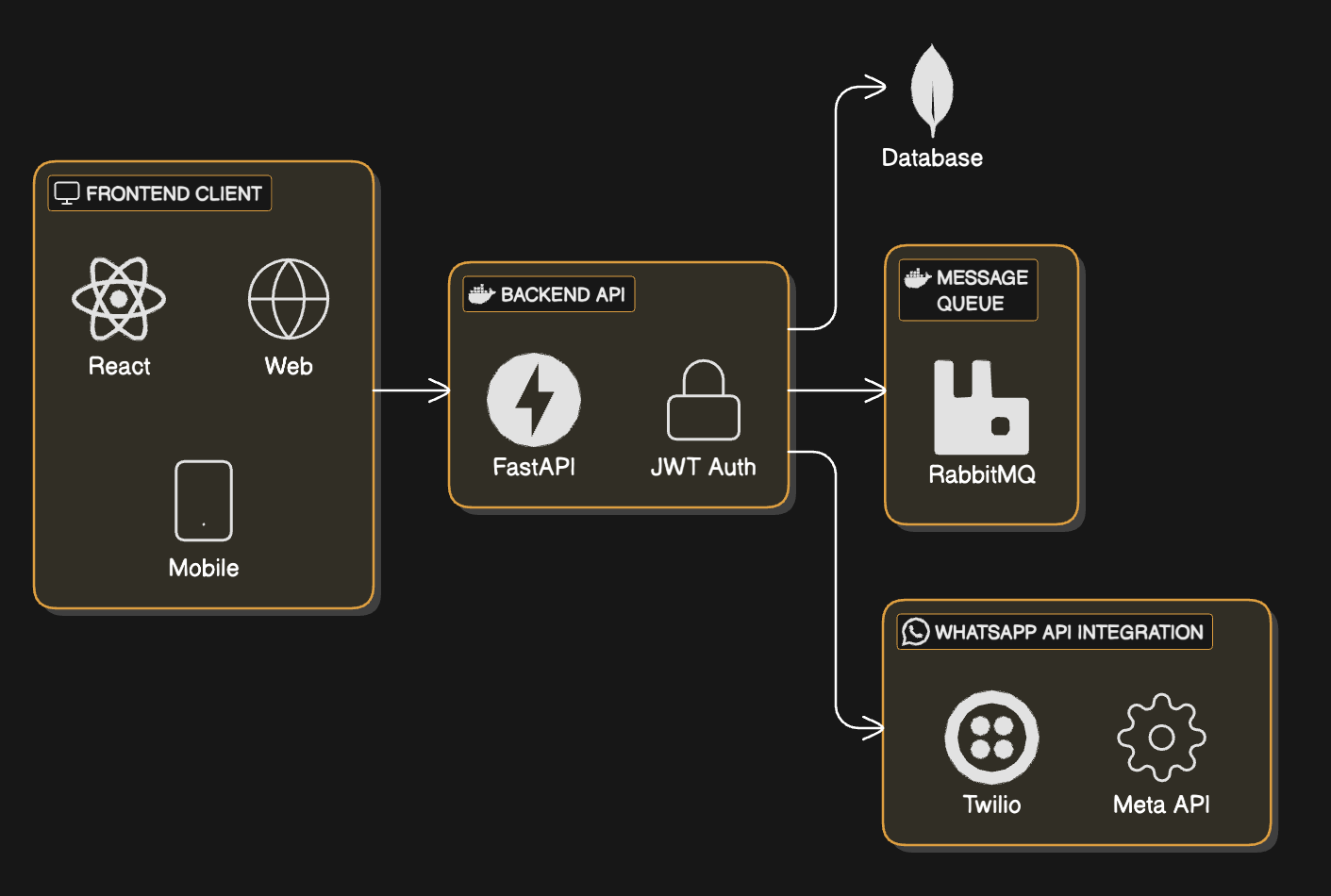🏗️ Backend Architecture Justification for Triage System
The architecture for the triage system has been thoughtfully designed to prioritize portability, scalability, and cloud-agnostic deployment, aligning with the needs of dynamic healthcare environments such as hospitals. Below is a breakdown of the architectural decisions and the rationale behind each component.
1. Docker-Based Microservice Architecture
We use Docker to containerize the backend services, ensuring the entire system can run reliably across different environments. This design makes the application highly portable, which is essential when integrating with varying hospital infrastructures. It also simplifies deployment on cloud platforms such as IBM Cloud or AWS.
2. Backend API (FastAPI)
The core of the system is a FastAPI service:
- Fast, modern Python web framework suitable for microservices.
- Enables creation of well-documented RESTful APIs for handling triage forms, users, and system interactions.
- Designed for asynchronous processing, which supports efficient handling of concurrent requests such as WhatsApp message sends and form submissions.
3. MongoDB as the Primary Database
MongoDB was chosen due to its:
- Schema flexibility, which is beneficial in the context of dynamic triage forms that may vary between hospitals or evolve over time.
- Ease of integration with modern backend stacks and Docker.
- Compatibility with both IBM Cloud Databases and AWS DocumentDB, simplifying future migrations.
4. RabbitMQ for Asynchronous Messaging (Planned for Scaling Phase)
Although the initial version of the system will operate without a message queue, we plan to introduce RabbitMQ as the system scales. This component will decouple resource-intensive tasks such as:
- Sending WhatsApp messages.
- Processing patient replies or scoring logic.
By introducing the message queue in a later phase, we keep the system lightweight during early iterations while enabling future scalability and resilience when usage increases.
5. WhatsApp Integration (e.g., Meta API or Twilio)
The system integrates with WhatsApp through providers like Meta’s Business API or Twilio. This allows:
- Automated communication with patients.
- Efficient follow-ups for triage or remote assessments.
Message logs and statuses can be persisted in MongoDB for auditing and traceability.
6. Modular Codebase Structure
The codebase is modularized to separate concerns:
routes/handle API endpoints.schemas.pydefines data models for validation.database.pyabstracts MongoDB connection logic.whatsapp.pyencapsulates third-party messaging logic.
This modularity makes the system maintainable and extensible.
7. Cloud Provider Flexibility via Terraform
To accommodate deployment on both IBM Cloud initially and AWS in the future, the architecture is designed to be cloud-agnostic:
- Infrastructure will be defined using Terraform, allowing consistent and automated provisioning across providers.
- Services such as VMs, VPCs, databases, and queues can be abstracted into reusable modules.
- This reduces vendor lock-in and enables a smooth cloud transition when the time comes.
8. Kubernetes for Future Orchestration (Optional)
As the system grows and traffic increases, we plan to introduce Kubernetes as a container orchestration layer. Kubernetes will help:
- Manage container scaling automatically.
- Handle service discovery and load balancing.
- Improve deployment reliability and fault tolerance.
Initially, Docker Compose will suffice for local and small-scale deployments, with Kubernetes reserved for higher scalability needs.
✅ Summary of Benefits
- Portability: Fully containerized with Docker and orchestration-ready.
- Scalability: Designed to scale incrementally with RabbitMQ and Kubernetes.
- Flexibility: MongoDB schema-less design and modular code allow easy adaptation.
- Cloud Independence: Terraform-based infrastructure supports multi-cloud strategy.
- Compliance-Friendly: Design allows for logging, auditing, and secure communication.
